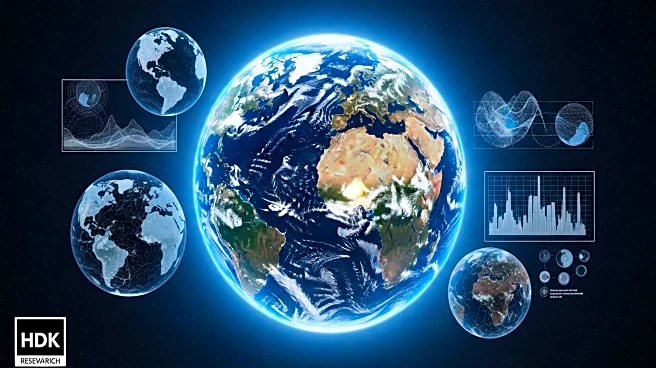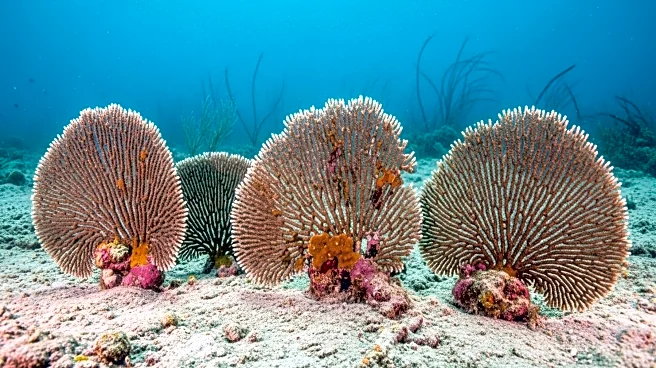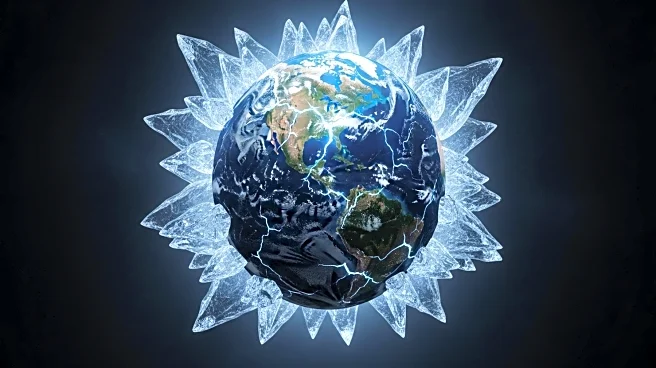What's Happening?
Scientists have identified a new mechanism that could cause Earth to 'overcorrect' for climate change, potentially leading to the next ice age arriving on schedule rather than being delayed. This mechanism involves a 'thermostat' that efficiently buries carbon beneath the seafloor, a process that could neutralize human carbon emissions within 100,000 years. The discovery, published in the journal Science, suggests that Earth's phosphorus cycle plays a crucial role in this process. Phosphorus, released from weathered rocks, enters the ocean and fuels phytoplankton growth. When these organisms die, they deposit organic carbon on the seafloor, which helps lower global temperatures. This cycle could counteract the delay in the next ice age caused by current climate change.
Why It's Important?
The findings have significant implications for understanding Earth's long-term climate regulation. While the newly discovered 'thermostat' does not mitigate immediate global warming effects, it suggests that Earth's natural processes could eventually restore atmospheric CO2 levels to pre-industrial levels. This could ensure the timely arrival of the next ice age, which is crucial for maintaining Earth's ecological balance. The research highlights the complexity of Earth's climate systems and the potential for natural processes to counteract human-induced climate change over geological timescales.
What's Next?
The study opens new avenues for climate research, particularly in understanding how Earth's natural cycles might interact with human activities. Researchers may focus on modeling the phosphorus cycle's impact on climate change and exploring its potential to influence future climate events. The findings could also inform policy discussions on climate change mitigation strategies, emphasizing the need to consider long-term geological processes alongside immediate human interventions.
Beyond the Headlines
The discovery raises ethical and philosophical questions about humanity's role in altering Earth's natural cycles. It underscores the importance of sustainable practices to minimize human impact on the environment. Additionally, the research may lead to a reevaluation of climate models, incorporating geological processes that have been overlooked in predicting future climate scenarios.











